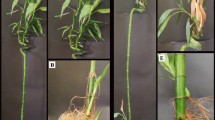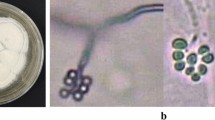Abstract
ONE of the main problems related to cotton production in the irrigated valleys of the northern coastal part of Peru is connected with damage to the crop produced by the cotton stainer (Dysdercus ruficollis, L.), which in some years causes a loss of many million soles (1 sol = 1s. 1¾d. nominal value). The cotton crops of the valleys of Pativilca, Supe, Huarmey, Casma, Santa and Piura-Chira are the most affected annually by the “Arrebiatado” insect.
This is a preview of subscription content, access via your institution
Access options
Subscribe to this journal
Receive 51 print issues and online access
$199.00 per year
only $3.90 per issue
Buy this article
- Purchase on Springer Link
- Instant access to full article PDF
Prices may be subject to local taxes which are calculated during checkout
Similar content being viewed by others
References
Steyaert, R. L., Pub. Inst. Nat. Etude Agron. Congo Belge., Serie Scient. No. 16 (J. Duculot, Gembloux, 1939).
Author information
Authors and Affiliations
Rights and permissions
About this article
Cite this article
BARDUCCI, T., RÁDA, G. & WILLE, J. Control of Internal Boll Rot of the Cotton Plant, caused by Insect Punctures (Dysdercus sp.), through Selection of Resistant Strains. Nature 156, 235–236 (1945). https://doi.org/10.1038/156235a0
Issue Date:
DOI: https://doi.org/10.1038/156235a0
Comments
By submitting a comment you agree to abide by our Terms and Community Guidelines. If you find something abusive or that does not comply with our terms or guidelines please flag it as inappropriate.



